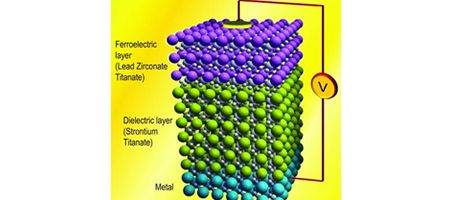Engineers at the University of California, Berkeley, say they’ve been able to reduce the minimum voltage necessary to store charge in a capacitor, cutting the power draw and heat generation of electronic devices.

“Just like a Formula One car, the faster you run your computer, the hotter it gets. So the key to having a fast microprocessor is to make its building block, the transistor, more energy efficient,” says graduate student Asif Khan.
“Unfortunately, a transistor’s power supply voltage, analogous to a car’s fuel, has been stuck at 1 volt for about 10 years due to the fundamental physics of its operation. Transistors have not become as ‘fuel-efficient’ as they need to be to keep up with the market’s thirst for more computing speed, resulting in a cumulative and unsustainable increase in the power draw of microprocessors. We think we can change that.”
The team based their approach on ferroelectrics, materials that holds both positive and negative electrical charges, even when a voltageisn’t applied. The electrical polarization in ferroelectrics can be reversed by applying an external electrical field.
The engineers demonstrated for the first time that in a capacitor made with a ferroelectric material paired with a dielectric – an electrical insulator – the charge accumulated for a given voltage can, in effect, be amplified, a phenomenon called negative capacitance.
They say their discovery sets the stage for a major upgrade to transistors.
“This work is the proof-of-principle we have needed to pursue negative capacitance as a viable strategy to overcome the power draw of today’s transistors,” says assistant professor Sayeef Salahuddin.
“If we can use this to create low-power transistors without compromising performance and the speed at which they work, it could change the whole computing industry.”






